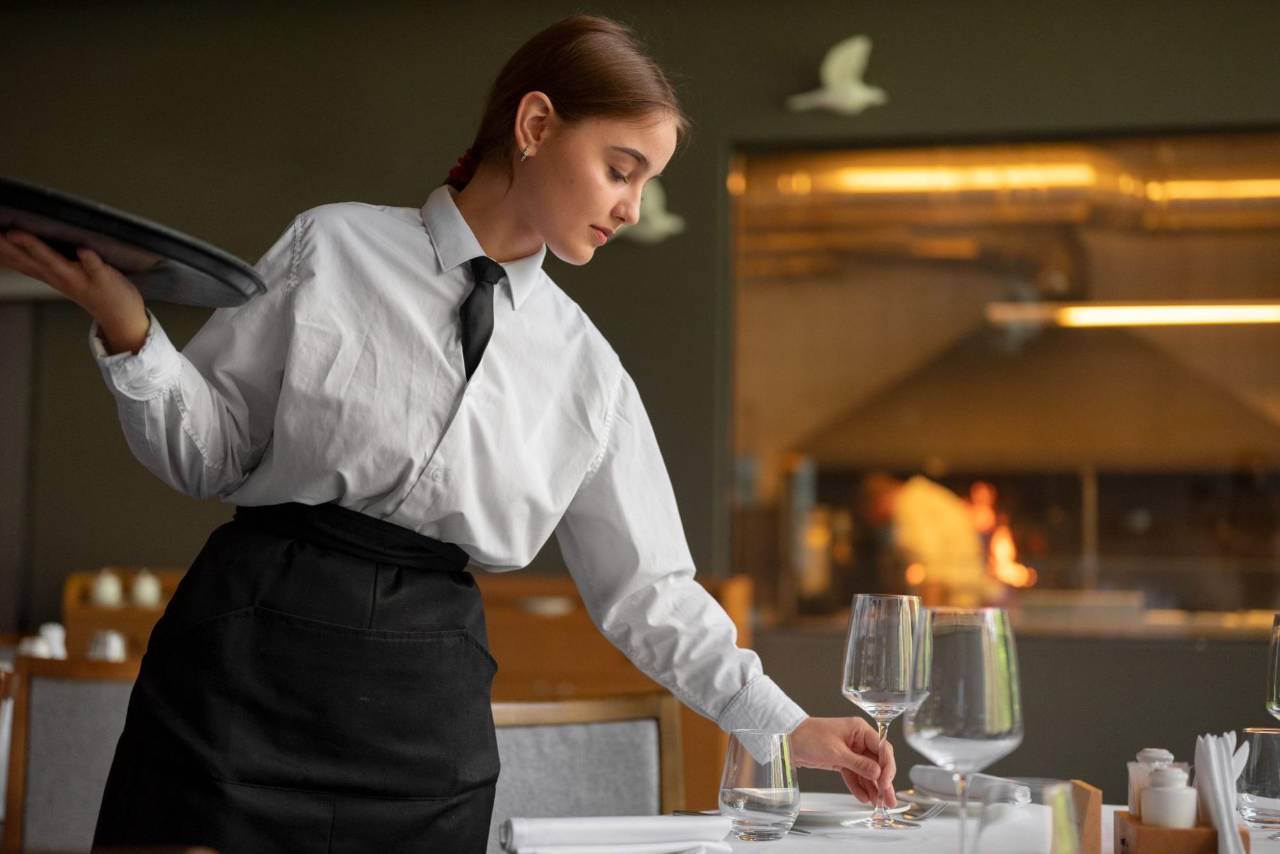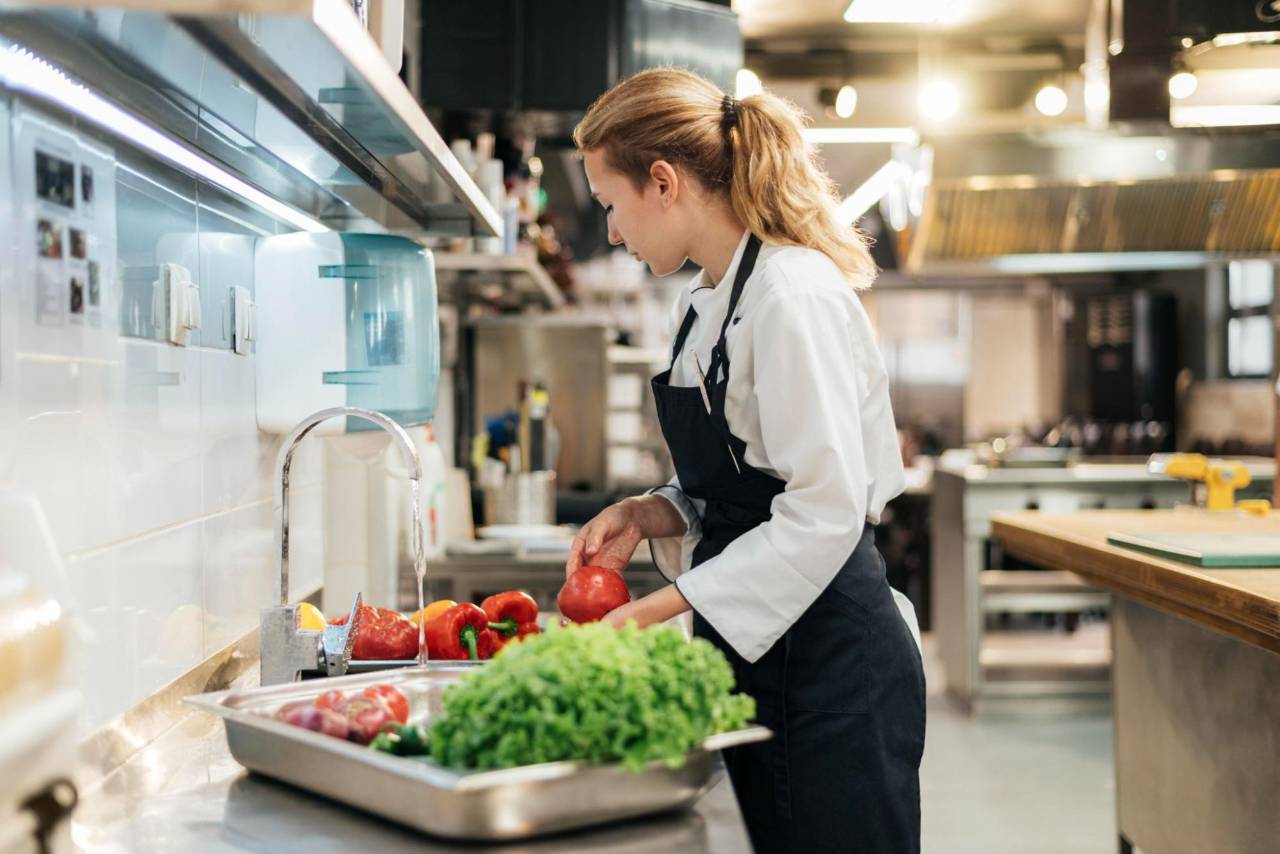Front of House and Back of House in Restaurants Explained
A practical guide explaining how front of house and back of house teams work together to improve service, communication, and restaurant efficiency.

Two Sides of One Operation
Every restaurant runs on two main parts- the Front of House (FOH) and the Back of House (BOH). The FOH includes everyone guests see - hosts, servers, bartenders, and managers - while the BOH is made up of cooks, chefs, dishwashers, and prep staff who keep things running smoothly behind the scenes. Both sides depend on each other to give guests a great experience.
When the FOH and BOH don't work well together, problems show up quickly - slow service, wrong orders, and unhappy customers. But when communication is clear and the workflow is organized, the whole operation feels smoother. Guests get their food faster, staff feel less stressed, and owners see better results.
Defining Front of House (FOH)
The Front of House (FOH) is everything a guest sees and interacts with from the moment they walk in until they leave. It includes the dining area, bar, waiting area, and the people who work there - hosts, servers, bartenders, bussers, and managers. These team members are the direct link between your restaurant and your guests, shaping the first and last impressions of every visit.
A strong FOH team focuses on three key things - service, atmosphere, and efficiency. Service means greeting guests warmly, answering questions about the menu, and handling orders quickly and accurately. The atmosphere covers everything from lighting and cleanliness to background music and table setup. Efficiency ensures that guests are seated, served, and billed smoothly without long waits or confusion.
Owners should track basic FOH performance metrics like average check size, table turnover rate, and guest satisfaction to understand how well the team is performing. A busy night doesn't always mean success if guests leave unhappy or tables turn too slowly.
When the FOH runs smoothly, guests feel cared for and valued. That connection is what keeps people coming back - and it all starts with clear communication, attention to detail, and consistent teamwork.
Defining Back of House (BOH)
The Back of House (BOH) includes all the areas and staff guests don't usually see but who make every meal possible. This part of the restaurant covers the kitchen, prep areas, dishwashing station, storage, and sometimes staff rooms. The BOH team includes chefs, cooks, dishwashers, and prep staff - the people responsible for food quality, safety, and timing.
The BOH is where the action happens. Orders come in from the FOH, ingredients are prepped and cooked, and dishes are plated for service. Every task must be precise and consistent. If the kitchen runs behind or a dish isn't prepared correctly, the entire dining experience can suffer. That's why organization, timing, and cleanliness are so important.
Restaurant owners should monitor key BOH metrics like ticket times, food waste percentage, and food cost percentage. These numbers show how efficiently the kitchen operates and help identify areas for improvement.
While the FOH represents the restaurant's personality, the BOH reflects its discipline and standards. When the kitchen operates smoothly, food arrives fresh, consistent, and on time - helping the FOH deliver a great guest experience. In the end, the BOH's hard work behind the scenes is what keeps customers coming back.

The Invisible Line
The moment an order leaves the dining room and reaches the kitchen is where the Front of House (FOH) and Back of House (BOH) truly connect. This point - where service meets production - is often called the pass or expo line. It's where timing, communication, and teamwork must come together perfectly to keep guests happy and operations flowing smoothly.
A small mistake here can create big problems. A server might enter the wrong item into the POS, or the kitchen might misread a special request. These simple errors can slow down service, waste food, and frustrate both teams. That's why having clear systems and open communication is so important. Whether it's using kitchen display screens, color-coded tickets, or a designated expediter, consistency helps reduce confusion.
This is also where respect between teams matters most. When servers understand the pressure of the kitchen, and cooks recognize the challenges of the dining room, cooperation improves naturally. Regular pre-shift meetings and quick check-ins help keep both sides aligned.
The "invisible line" isn't just a physical space - it's the link that holds the restaurant together. When it works well, guests never notice it. But when it breaks down, everyone does.
The Cost Balance Between FOH and BOH
Balancing Front of House (FOH) and Back of House (BOH) labor costs is one of the most important parts of running a profitable restaurant. While both sides are essential, they operate very differently. Finding the right balance means understanding where your money goes, how to schedule effectively, and how to keep both teams motivated without overspending.
Here are the key parts to managing this balance effectively -
1. Understand Labor Cost Distribution - The FOH usually includes tipped staff like servers and bartenders, while the BOH includes hourly or salaried employees such as cooks and dishwashers. Each group impacts your labor budget differently. A full-service restaurant might spend more on FOH labor, while fast-casual concepts may lean heavier on BOH.
2. Track Key Labor Metrics - Keep total labor costs around 30-35% of total sales, and break that down by department. Watch overtime, productivity, and shift efficiency to spot problem areas early.
3. Use Technology to Plan Smarter - Tools like POS-integrated scheduling or labor forecasting software can predict busy hours and help align staffing levels with real demand.
4. Balance Cost and Service Quality - Reducing hours too much can hurt service, while overstaffing increases waste. Aim for the right number of people at the right time.
5. Review and Adjust Regularly - Labor costs change with seasons, menu updates, and traffic patterns. Reviewing weekly or monthly helps you stay in control and adapt before small issues grow.
Balancing FOH and BOH labor isn't just about cutting costs - it's about keeping service smooth, employees satisfied, and your restaurant financially healthy.
Common Challenges and How to Fix Them
Even the best restaurants face tension between the Front of House (FOH) and Back of House (BOH) teams. Miscommunication, stress, and workload differences can easily lead to frustration and mistakes. Recognizing these challenges early helps owners prevent bigger issues that can affect service and morale.
Here are some of the most common FOH-BOH challenges and how to fix them -
1. Poor Communication - When tickets are unclear or special requests aren't passed along, mistakes happen. The fix - use standardized ticket systems or kitchen display screens and train staff to confirm orders verbally. Clear communication reduces confusion and builds trust.
2. Uneven Workload - During rush hours, the kitchen can feel overwhelmed while the dining room stays calm - or the other way around.
The fix - cross-train employees and review scheduling data to better match staffing with demand.
3. Lack of Respect Between Teams - Each side may feel the other doesn't understand their pressure.
The fix - hold short pre-shift meetings where FOH and BOH review goals together. Shared recognition, like team incentives, also helps unify everyone.
4. Blame Culture - When something goes wrong, it's easy to point fingers.
The fix - focus on fixing processes, not assigning blame. Review the workflow to find and remove the root cause.
Fixing these challenges starts with empathy and structure. When FOH and BOH respect each other's roles, the entire restaurant runs smoother - and guests can feel the difference.

Using Technology to Bridge the FOH-BOH Gap
Technology plays a major role in connecting the Front of House (FOH) and Back of House (BOH) teams. Many common issues - like wrong orders, long wait times, or miscommunication - can be reduced when the right tools are in place. The goal isn't to replace people, but to make their jobs easier and more consistent.
1. Integrated POS Systems - A connected POS system ensures that every order placed by a server instantly reaches the kitchen without errors. Modifiers, special requests, and timing details are displayed clearly, so cooks know exactly what's needed.
2. Kitchen Display Systems (KDS) - Instead of paper tickets, KDS screens organize orders by time and priority. They help staff manage workflow during rush hours, track preparation times, and reduce clutter or missed tickets.
3. Inventory and Recipe Management Software - These tools allow BOH teams to manage food costs and par levels, while giving managers insight into ingredient usage. When FOH sales data syncs with BOH inventory, forecasting becomes much more accurate.
4. Scheduling and Communication Platforms - Apps that combine scheduling, shift swaps, and messaging keep both teams informed. Everyone sees updates in real time, reducing no-shows or confusion.
When FOH and BOH share data and communication through technology, they operate as one team. The result is smoother service, less stress, and more consistent guest experiences.
Common Terminology from the Front and Back of House
Every restaurant has its own language - a mix of quick terms, abbreviations, and slang that keeps operations running smoothly. Understanding this shared language helps Front of House (FOH) and Back of House (BOH) teams communicate clearly and avoid mistakes, especially during busy shifts. When everyone speaks the same restaurant language, things move faster and smoother.
Here are some common terms used in both FOH and BOH -
1. "86" - Means an item is no longer available. For example, "86 salmon" tells servers to stop selling it.
2. "All day" - The total number of dishes currently needed. If two servers order three burgers each, that's "six burgers all day."
3. "Fire" - Tells the kitchen to start cooking a specific dish or table's order.
4. "In the weeds" - Used when someone is overwhelmed and struggling to keep up with orders or guests.
5. "On the fly" - Means a dish needs to be made quickly due to a missed or changed order.
6. "Expo" - Short for expediter, the person who manages the flow of food from kitchen to servers.
7. "Par level" - The minimum amount of stock or ingredient that should always be available.
Encouraging both FOH and BOH to learn and use these terms builds teamwork and clarity. A shared vocabulary turns chaos into coordination, helping every shift run more smoothly from kitchen to table.